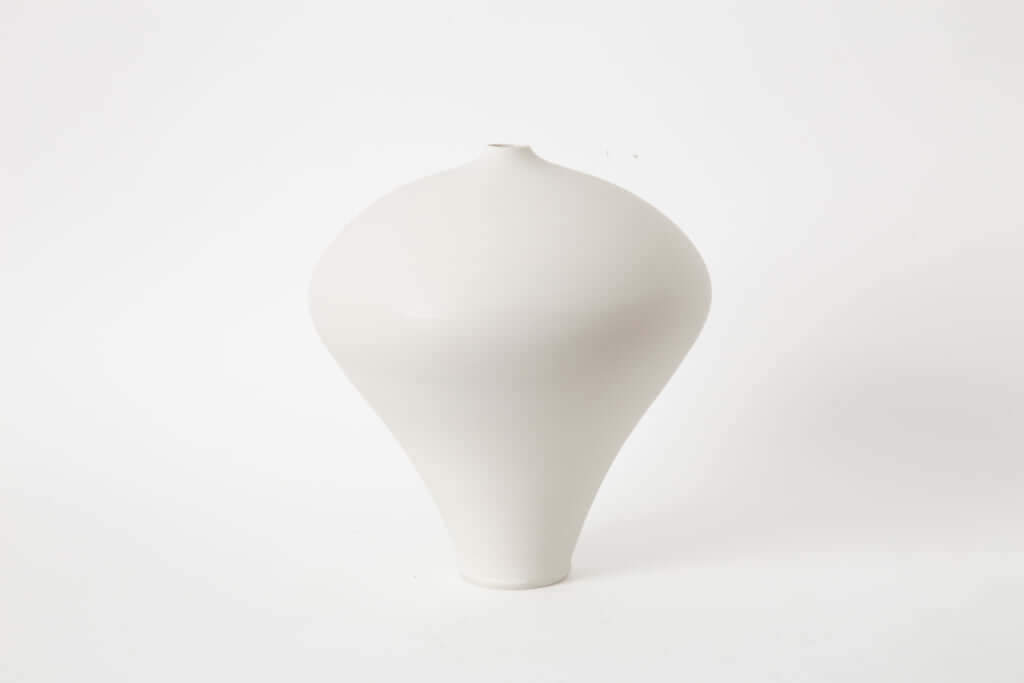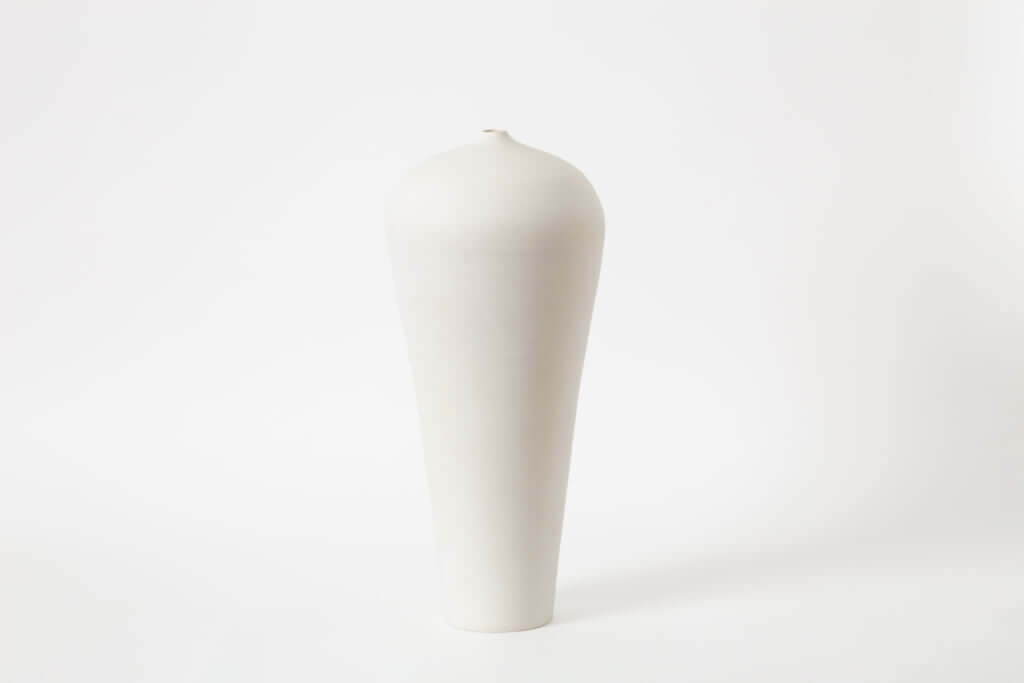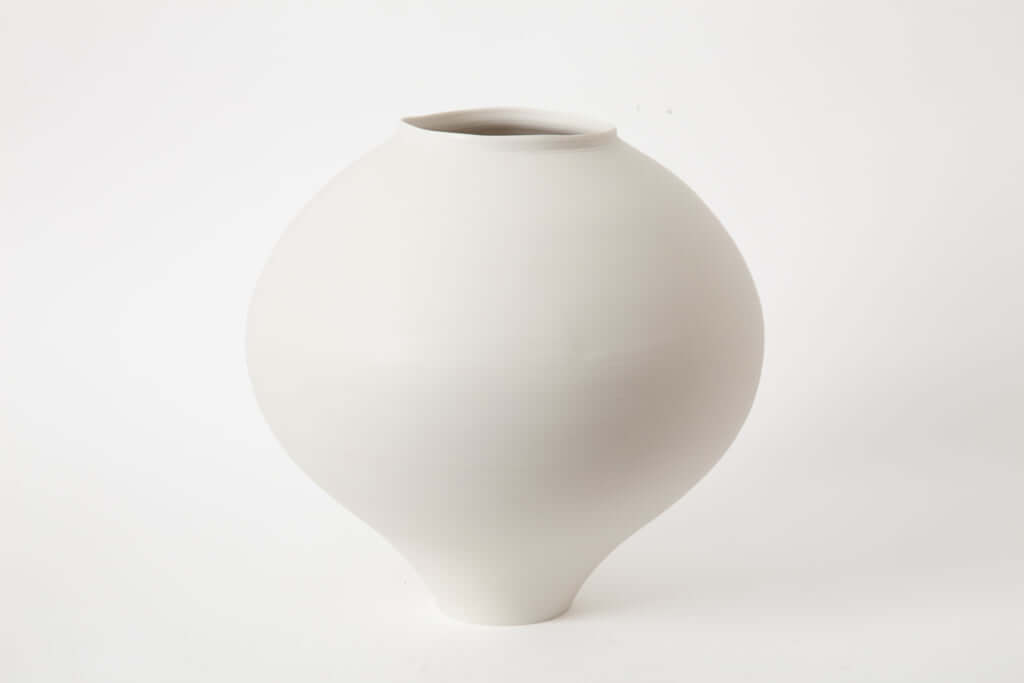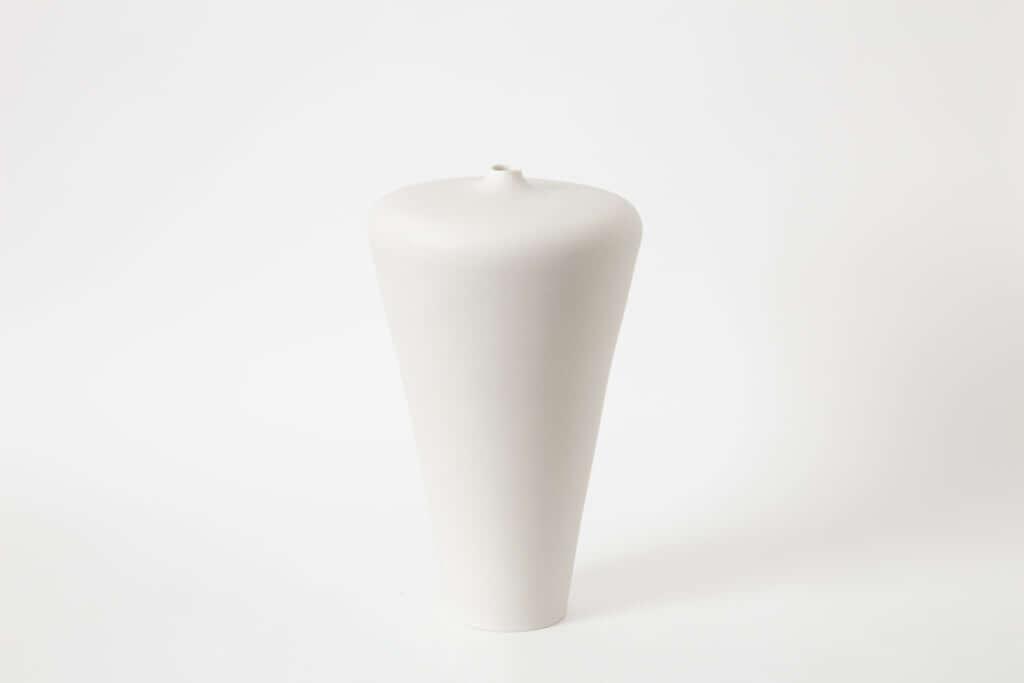Taizo Kuroda, Master of White Porcelain
Since the 1990s, the ceramicist has been developing his own technique to create porcelain, looking for the perfection in imperfection.

Courtesy of t.gallery.
Situated at the invisible border between art and handicrafts, Taizo Kuroda’s ceramics blur the boundaries. The artisan, born in 1946, is considered one of the masters of Japanese ceramics and is known and respected by the biggest names in the art world, like designer Issey Miyake and architect Tadao Ando.
The latter says of the artist, who has developed his own technique to create porcelain and who is constantly looking for the space between asymmetry and the perfection in imperfection, ‘Taizo Kuroda’s pure white reflects the colour of his spirit, in the incessant pursuit of truth.’
The impossible pursuit of the perfect shape
Since the start of the 90s, Taizo Kuroda has been devoted to white porcelain. Behind its milky whiteness and softness to the touch lie subtle irregularities, and the muted asymmetry of his vases and bowls mirrors the diversity found in nature.
All of Taizo Kuroda’s creations, produced at his potter’s wheel, are marked by this taste for minimalism and uniqueness. ‘I am constantly searching for the perfect shape’, he reiterates, ‘but I’m not quite ready for it yet.’ For the moment, his creations, with their random shapes, paint a picture of the world as it is: uneven and authentic.
Taizo Kuroda’s work can be found on his website and on t.gallery’s website.

Courtesy of t.gallery.

Courtesy of t.gallery.

Courtesy of t.gallery.

Courtesy of t.gallery.
TRENDING
-
A House from the Taisho Era Reveals Its Secrets
While visiting an abandoned building, Hamish Campbell discovered photographs the owner had taken of the place in the 1920s.

-
The Taboo-Breaking Erotica of Toshio Saeki
The master of the 1970s Japanese avant-garde reimagined his most iconic artworks for a limited box set with silkscreen artist Fumie Taniyama.

-
With Meisa Fujishiro, Tokyo's Nudes Stand Tall
In the series 'Sketches of Tokyo', the photographer revisits the genre by bringing it face to face with the capital's architecture.

-
Masahisa Fukase's Family Portraits
In his series ‘Family’, the photographer compiles surprising photos in which he questions death, the inescapable.

-
Hajime Sorayama's Futuristic Eroticism
The illustrator is the pioneer for a form of hyperrealism that combines sensuality and technology and depicts sexualised robots.





